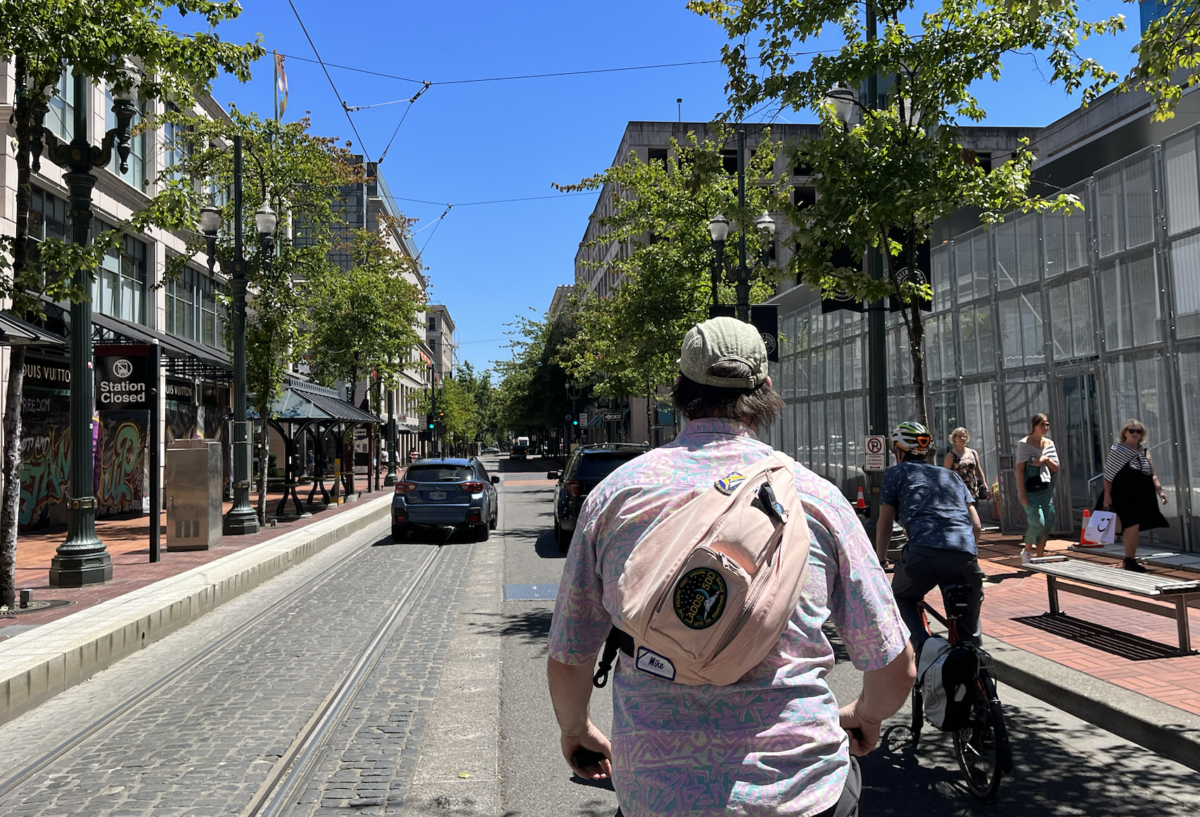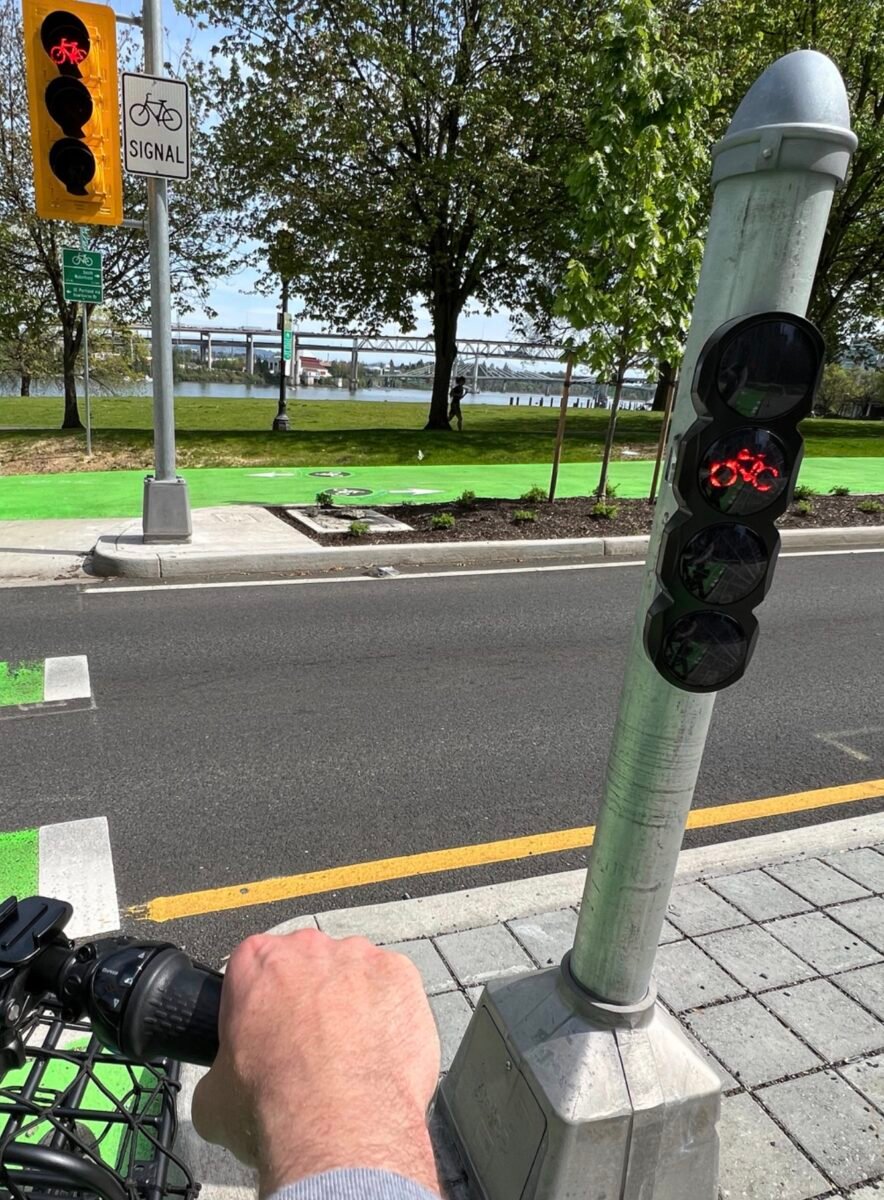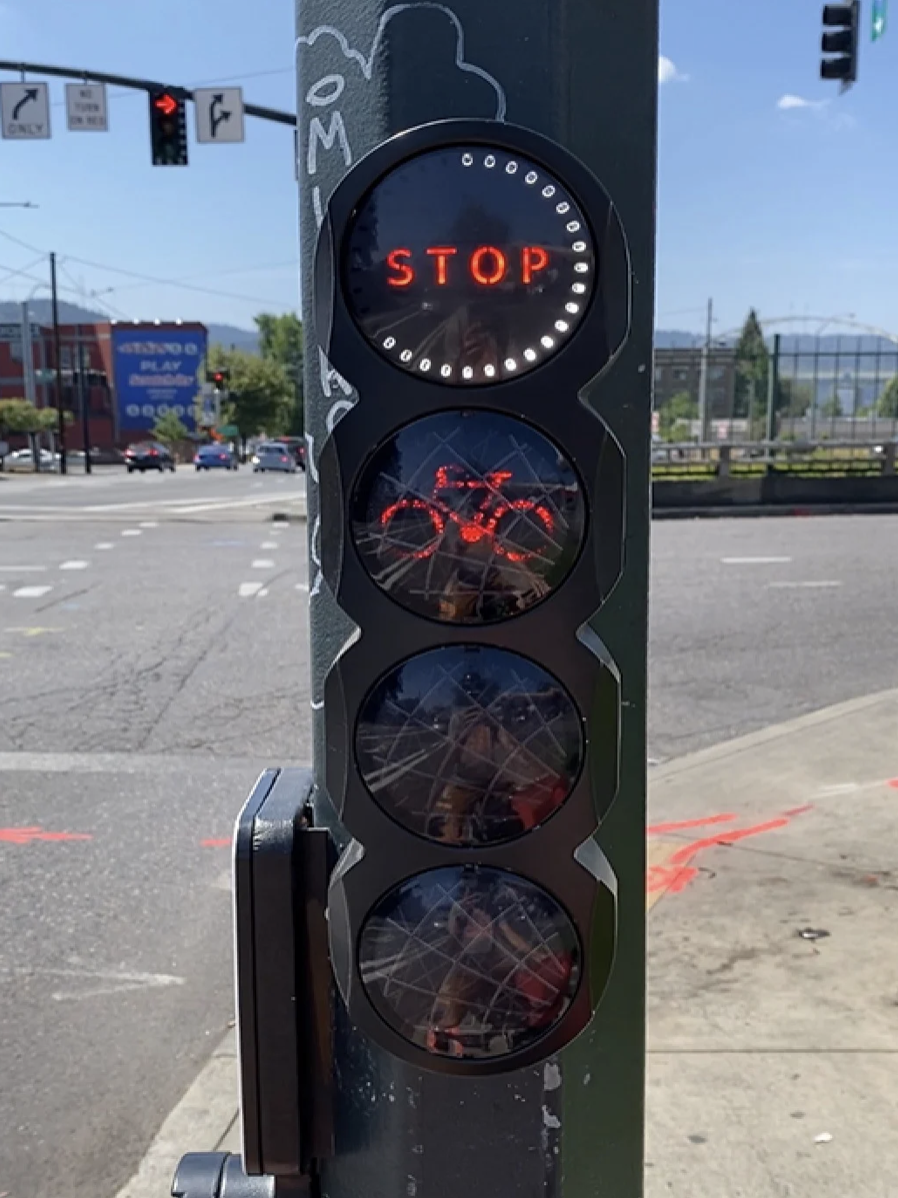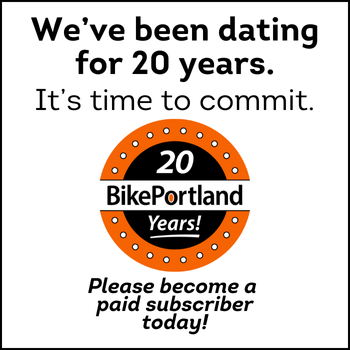

Good urban planning means the average person traveling around a city doesn’t need to know anything about what went into designing it – they can just get around intuitively. Peter Koonce, who manages the traffic signals and street lighting division at the Portland Bureau of Transportation, is keenly aware of this. Koonce and his team oversee signals many people use without much thought. But that’s okay with him, as long as they work.
On a ride last Thursday, Koonce led a group around Portland’s central city to talk shop about a few of the 1,200 traffic signals he manages. It was just the latest “policy ride” hosted by local bike advocacy group Bike Loud PDX that give the urban planning-curious a backstage look at what’s going on with projects around the city.
When it comes to signal operations, they’re much more complex than you think, especially when you take into account all the different transportation modes that need to function together. Koonce and his team at PBOT do take all these modes into consideration. And since private cars are at the bottom of Portland’s transportation hierarchy, PBOT always has an eye toward using signals to improve safety and be easy for non-drivers to use.
One way PBOT uses traffic signals to make it safer to walk and bike is to install a lot of them.
“We actually manage the speeds of traffic by using the signals frequently,” Koonce said.
The more signals there are, the more traffic will have to stop, unless people are going a safe speed. Most signals in the central city are timed to reward users with a string of greens if they’re going about 11-12 mph. That happens to be an average cycling speed. It’s also fast enough to get around, but slow enough to prevent calamitous crashes.

While some of Portland’s traditional signals are programmed with bicycle riders in mind, there are also bike-only signals installed specifically for them.
Koonce talked about a particular kind of bike signal they’ve imported from the Netherlands. It lets people on bikes know their presence has been registered and then offers a countdown so they know how long they’ll have to stop. In the gallery below, you can see a new signal on Naito Parkway on the left and a close-up of a similar signal installed on Broadway at North Williams Ave in 2020.


Using imported bike signals is not normal for American traffic engineers. PBOT’s Koonce happens to be an exception to the rule. He’s also a national expert who travels the country sharing insights about what we do here in Portland. His motive for encouraging other cities to try bike-friendly signal treatments, he said at the ride, is a roundabout way of influencing national signal standards (something he also gets to do in a direct way as an executive board member of the National Committee on Uniform Traffic Control Devices, a Federal Highway Administration advisory body).
“When Portland does something that’s new and innovative, [the FHWA, who authorizes new treatments] will say, ‘oh, that’s just Portland. That’s not in New York. That’s not LA. It’s not Boston. It’s just Portland,'” Koonce said. “So we’re hoping other cities will actually use them so it’ll become a more of a de facto standard.”
Koonce is known to push the envelope with what the (traditionally very conservative) FHWA allows, so he and his team have to carry out federally-mandated experiments when implementing signals like the ones used on Naito. They monitor data and usage patterns for the new signals, then report back to the feds. Recently, OSU and PBOT have partnered to analyze the Better Naito Forever bikeway and upcoming SW 4th Avenue Improvement Project to evaluate “bicycle safety and comfort, especially with respect to conflicts between turning vehicles, buses, and bicyclists at signalized intersections.”
The Bike Loud group looked at several different signal types on the ride. The one I found most compelling was on the new Naito Parkway protected bikeway at the intersection with Morrison Street. At this crossing, walkers need to cross the bike traffic lanes to get to the pedestrian beg button, which is on a concrete median island between the lanes (see image below).
While we were there, two passersby became unwitting participants for us to observe. Koonce pointed out they were good subjects because they did what PBOT doesn’t want people to do at that intersection: After crossing the bikeway to press the beg button on the island, they moved back to the curb they started on to wait for the signal (so they ended up crossing the bike path three times instead of just once).
“They’re walking out, not feeling comfortable waiting out there and walking back,” Koonce said. “We were actually worried [people would do that.]”
This was an important scene to witness because it demonstrates one of the most vital parts of Koonce’s job: to understand human behavior. Good signal design shouldn’t force people to do things that aren’t natural based on the transportation bureau’s agenda. That can lead to low compliance and dangerous outcomes. Koonce instead aims to constantly tweak the system so it achieves the city’s goals while also being intuitive. And he’s a sponge for data, always asking for more input.
“We’re ironing out those kinks, and so continue to give us feedback as you experience Better Naito,” Koonce said. “We’re always debating: Is this really going to work for people? How do we communicate to people? And how do we make things better?”





